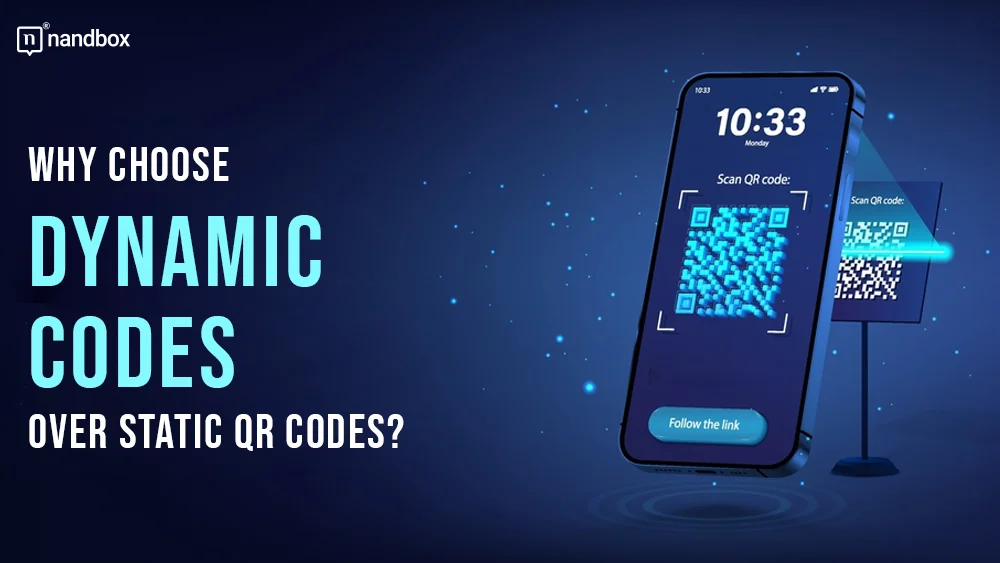Static vs dynamic QR Code. Have you ever wondered why businesses increasingly opt for dynamic codes instead of static ones? As QR codes become a crucial tool in marketing and operations, understanding the benefits of dynamic versions can help you make informed decisions for your business. In this article, we’ll explore the advantages of dynamic codes and why they are a superior choice.
Static vs Dynamic QR Code: Understanding Dynamic QR Codes
Dynamic QR codes offer greater flexibility and functionality compared to their static counterparts. They can be updated with new information without changing the code, making them highly adaptable.
This feature is useful for businesses that must provide current and relevant information to their customers. Unlike static QR codes, which encode fixed information, dynamic codes redirect users to a URL that can be edited as needed. This allows businesses to change the content linked to the code without generating a new one, saving time and resources.
Advantages of Dynamic Codes
One of the primary benefits of dynamic codes is their flexibility. Businesses can easily update the information linked to the code, ensuring that users always access the most current content. This is useful for marketing campaigns, event promotions, and product information updates. Additionally, dynamic codes provide valuable analytics.
Businesses can track how often the code is scanned and where and what devices were used. This data can inform marketing strategies and improve customer engagement. Gathering insights into user behavior is a significant advantage over static QR codes, which do not offer tracking capabilities.
Enhanced User Experience

Dynamic codes enhance the user experience by providing up-to-date information and personalized content. For example, a restaurant can use dynamic menu QR codes to update daily specials or promotions. Customers scanning the code will always see the latest offerings.
Similarly, retail stores can use dynamic codes to give customers real-time discounts or information about new arrivals. This level of personalization and relevance improves the overall customer experience and increases engagement. By offering fresh and targeted content, businesses can build stronger customer relationships and encourage repeat visits.
Cost-Effectiveness and Efficiency
Using dynamic codes can be more cost-effective and efficient than static ones. Since dynamic codes can be edited and reused, businesses save on the cost of printing new codes for each update. This is particularly advantageous for industries that frequently change offerings or need to keep information current.
The ability to manage content updates remotely also reduces the need for physical interventions, saving time and effort. Furthermore, dynamic codes can be integrated with other digital tools and platforms, streamlining operations and enhancing efficiency. This adaptability makes them a practical choice for businesses looking to optimize their processes.
Security Features
Dynamic codes offer enhanced security features that static codes lack. Because the content of a dynamic code is saved on a secure server and can be updated remotely, it reduces the risk of displaying outdated or incorrect information.
Additionally, businesses can add password protection or expiration dates to dynamic codes, ensuring only authorized users can access certain information. This level of control is crucial for businesses that handle sensitive data or need to maintain the integrity of their information. The ability to manage access and content updates securely makes dynamic codes a reliable option for various applications.
Scalability and Versatility
Dynamic codes are highly scalable and versatile. They can be used in various industries and applications, from marketing and retail to healthcare and education. In the healthcare sector, dynamic codes can provide patients with updated information about their medications or treatment plans.
In education, they can link students to the latest course materials or announcements. Updating information on the fly makes dynamic codes suitable for small and large businesses.
How to Implement Dynamic Codes Effectively
- Choose a reliable QR code generator that offers dynamic code capabilities. You Use QrCodeChimp dynamic QR code generator for free, to create your own Dynamic QR codes
- Design the QR code to align with your brand’s visual identity
- Ensure high contrast between the QR code and its background for easy scanning
- Test the QR code with various devices to confirm compatibility
- Regularly update the linked content to keep it relevant and engaging
- Monitor analytics to track user engagement and optimize strategies
- Secure sensitive information with password protection if necessary
- Integrate QR codes with other digital tools to streamline operations
Dynamic QR codes offer numerous advantages over static codes, making them the superior choice for businesses. These codes provide significant benefits, including flexibility, enhanced user experience, cost-effectiveness, security features, and scalability. Companies can choose dynamic codes to ensure their information is always up-to-date and relevant, improving customer engagement and operational efficiency. As the use of Quick Response codes grows, dynamic versions stand out as a practical and powerful tool for modern businesses.



